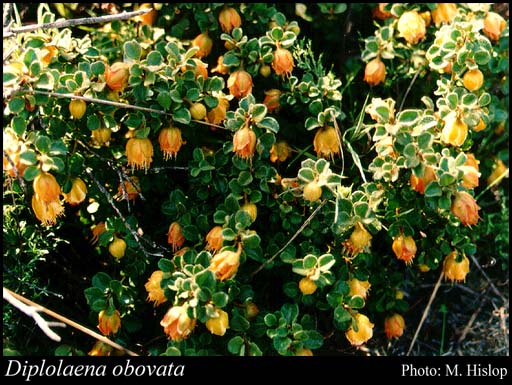- Reference
- Nuytsia 12(1):117 (1998)
- Conservation Code
- Not threatened
- Naturalised Status
- Native to Western Australia
- Name Status
- Current
Small, erect shrub, 0.2-0.8 m high, leaves papery, broadly obovate, with sparse indumentum. Fl. yellow/green & red, May to Jun or Aug to Sep. Shallow sand over limestone. Coastal limestone.

Scientific Description
Shrub, spines absent; branchlets smooth, without distinct raised glands, +/- cylindrical in cross-section, covered in hairs or scales, the hairs stellate (star-shaped). Leaves opposite, simple, 10-22 mm long, 8-15 mm wide, flat, the margins flat, smooth, without distinct raised glands, covered in hairs or scales, with stellate (star shaped) hairs; stipular excrescences absent. Flowers in a distinct head surrounded by bracts, the outer bracts 10-15 mm long; pedicels 5-7 mm long; calyx minute or absent, smooth, without distinct raised glands; corolla red, yellow or green, petals five, 8-9 mm long, imbricate (overlapping), free, hairy on the surfaces; stamens numerous (more than twice as many as petals), 15-22 mm long, smooth, hairy; anthers 1-1.2 mm long, without an appendage. Flowers in May, June, August and September. Occurs in the South-West Botanical Province, in the Swan Coastal Plain and Geraldton IBRA region(s).
Distribution
- IBRA Regions
- Geraldton Sandplains, Swan Coastal Plain.
- IBRA Subregions
- Geraldton Hills, Lesueur Sandplain, Perth.
- IMCRA Regions
- Central West Coast.
- Local Government Areas (LGAs)
- Coorow, Dandaragan, Gingin, Irwin.